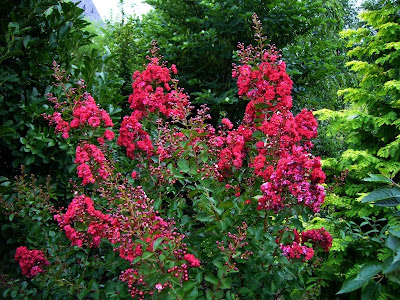Daphne 'Carol Mackie' and other flowers
The Daphne is blooming again. It caught me by surprise - I thought Daphnes bloomed in the spring. The flowers don't have very much perfume and I had to stick my nose up to the flowers to smell anything but the beautifully variegated leaves more than make up for the lack of scent. I guess I'll have to buy D. odorata or D. odora if I want one with perfume but I don't think it will survive our winters.

Daphne x burkwoodii 'Carol Mackie'

Interestingly colored Zinnia. I love the dusky orange with hint of pink at the base of the petals.


Eupatorium coelestinum, Mist Flower, Hardy Ageratum

I'm a bit confused about the name of this Geranium. I thought it was Roxanne but I keep seeing references to Rozanne; Geranium 'Rozanne', The 2008 Perennial Plant of the Year. The flower looks different than the pictures I've seen of Rozanne but articles I've seen say Roxanne is a typo. ???

Floribunda Rose, Rosa 'Angel Face'

Daphne x burkwoodii 'Carol Mackie'

Interestingly colored Zinnia. I love the dusky orange with hint of pink at the base of the petals.


Eupatorium coelestinum, Mist Flower, Hardy Ageratum

I'm a bit confused about the name of this Geranium. I thought it was Roxanne but I keep seeing references to Rozanne; Geranium 'Rozanne', The 2008 Perennial Plant of the Year. The flower looks different than the pictures I've seen of Rozanne but articles I've seen say Roxanne is a typo. ???

Floribunda Rose, Rosa 'Angel Face'




























































